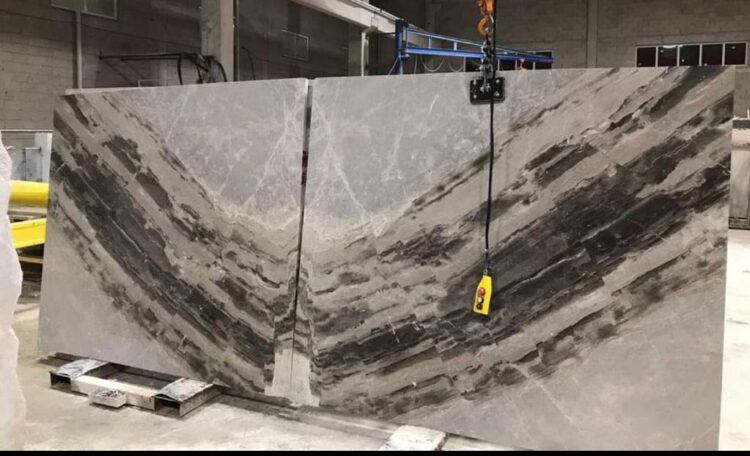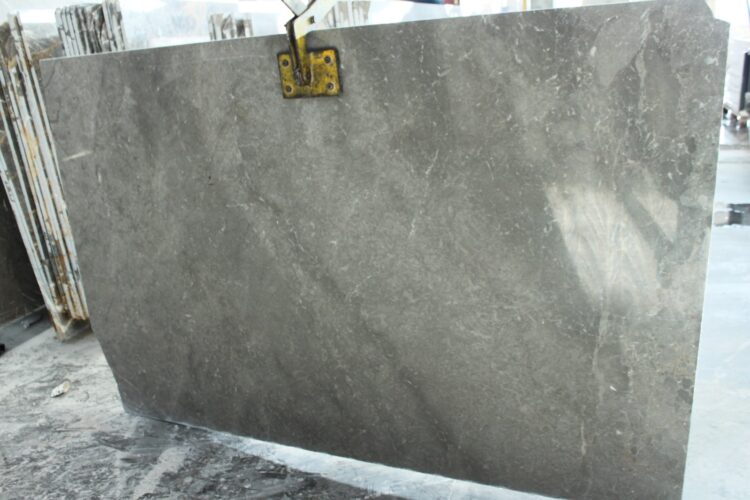As different voices, colours and textures come together in the magical world of art, the name Irena Posner carries a unique meaning. In the tradition of sculpture that extends from marble to modern forms, the name Posner represents a unique female voice. The interview I made with this unique perspective reflects the effort to touch the depths of art and life. While looking at the world through the eyes of Irena Posner, it offers a new perspective on the richness of not only art but also human experience.
Could you briefly tell our readers about yourself?
I am an artist working between Carrara and London. I have been working with stone for several years and am particularly interested in direct carving. The starting point is always led by a story or a concept that guides a particular project. Once In start carving, I work relatively quickly as I have a clear picture of what the forms will look like and its scale. Drawings guide me, and I often refine my approach as I sculpt. For instance, while creating sculptures of dogs, I learned about their anatomy as I carved various parts of the body.
How did you start your sculpting career? When and how did you decide to be interested in art?
I started as a painter and gradually transitioned into sculpting. Looking back at my old paintings I think I was always more interested in form than colour. I think I felt a little restricted by the two dimensional plane of the canvas. I also work quite quickly, so I would get through paintings too quickly, but when I started working with stone, I found a perfect material to match my pace and rhythm.
How do you nurture your creative process? What are the sources of inspiration that lead you to sculpting?
You need to approach it without fear and also not worry too much about what the end result will be. I’m inspired by films, books being in creative places like Carrara, you see lots of people working on different things, you open yourself up to new processes and ways of working. I see lots of shows, go to museums. Speaking to other artists and writers is also important.
What do you consider when choosing the marble you use in your sculptures? Which marble do you prefer and why?
It’s a great question. Choosing stone is one of the most exciting parts of the process. I love walking among enormous stones in quarries and stone yards thinking whether I could make something with this or that piece. When I select marble in Carrara, I normally look for a whiter stone with warm tones and ochre or gold veining. This is statuario and a lovely stone to work with. It is really consistent and surprisingly soft compared to other types of stone, you almost forget you are working with a natural material. I like working with different types of stone. I recently purchased a piece of yellow onyx from Pakistan. I haven’t worked with it before, but I love the translucent quality of the material, but I hear it’s challenging to carve.
What themes and emotions do you usually try to express in your sculptures? Is there a particular message or emotion you want to convey to the audience?
I’m interested in exploring the human condition. This often comes through animal forms. I think there’s such a strong connection between us, that we often see something within ourselves through the animal. I also like to use humour in my work. I think that given the historical weight of the material and its symbolism with immortality and eternity, the minute that you start to deviate from this subject matter and subvert these qualities, you realise that you touch on something interesting. With marble sculpture, the conversation always goes towards the value of the material and its history.
What are the difficulties and conveniences of being a sculptor woman? What should be done to increase the number and effectiveness of women in the sector?There are not too many women working with stone as the work is dirty, heavy and dangerous. Most of my colleagues in the studio are men. In my creative practice I try to focus on encouraging more girls and young women to try sculpture. I ran a series of stone carving workshops over the summer in England and I think that when girls see me carving they feel more inclined to have a go themselves. And that’s how it all starts!
Which projects and goals in your art journey excite you? What are you planning to do in the near future?
I love to work on public commissions. I think one of the reasons I love sculpture is that it can go beyond the gallery walls. It can exist outside in open spaces and be in conversation with nature. I would definitely like to make more public works in the future.
Can you share the names and features of your 3 favorite projects?
I carved a 2.5 metre block of limestone as part of my most recent public commission in Harlow Sculpture Town. I worked on the sculpture in the local park and ran a series of stone carving workshops at the same time. I really enjoyed the interactions I had with the public as I was making the work. I think that art has a magical power of drawing people in and starting conversations. I think that I was a curious sight for the public as they were not used to seeing someone working by hand on a sculpture. The work will remain in the park and will hopefully preserve all the memories of those moments in the years to come. That feels quite special and humbling. I also enjoyed working on a private commission in England which was a stone and steel structure (Fable Tree) approximately 3 metres tall. Figuring out how the work would sit in the landscape and how the parts of the piece will come together was one of my favourite parts of the project.
There is a great awareness of time and the present within sculpture. For public sculpture, it takes around 10-12 months for a sculpture to emerge from a drawing, but when I am at my desk doodling, it feels like a playful, simple activity without any responsibilities. At that moment, everything is possible, and that is the best headspace to be in as an artist. I like to dream something up without thinking about logistics or what is possible, and have faith in myself and the process that it will all work itself out. It is hard work, there are so many logistical considerations along the way, but when I finish a sculpture, step back and look at it, I realise that it is possible to make this thing that is greater than yourself.



























 +90 532 585 51 95
+90 532 585 51 95 +90 532 585 51 95
+90 532 585 51 95